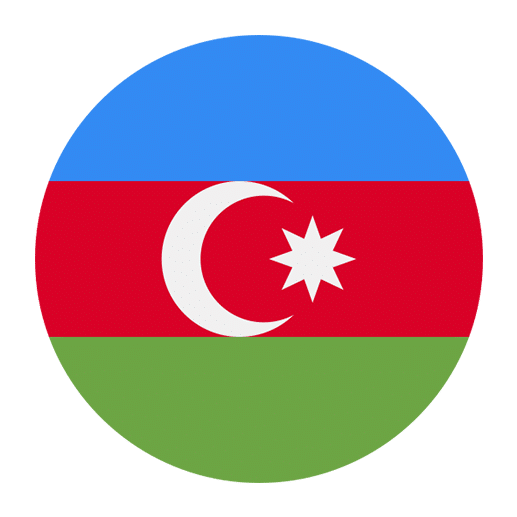Learning a new language can be a fascinating journey, and understanding the intricacies of its grammar is crucial to gaining fluency. One of the essential aspects of mastering Azerbaijani, a language spoken predominantly in Azerbaijan, is grasping how the past tense works. In Azerbaijani, as in English, there are different ways to express past actions and states. This article will guide you through the past tense in Azerbaijani, covering the simple past, continuous past, and perfect past tenses.
The Simple Past Tense (Qatar Keçmiş Zaman)
The simple past tense in Azerbaijani is used to describe actions that were completed at a specific point in the past. This tense is formed by adding specific suffixes to the verb stem. The suffixes change depending on the vowel harmony rules and the consonant changes in the verb stem.
Forming the Simple Past Tense
To form the simple past tense, you generally add the suffix -dı/-di/-du/-dü or -tı/-ti/-tu/-tü to the verb stem. The choice of suffix depends on the last vowel of the verb stem, in accordance with vowel harmony:
– If the last vowel is a front vowel (e, i, ö, ü), use -di or -ti.
– If the last vowel is a back vowel (a, ı, o, u), use -dı or -tı.
For instance:
– “Yazmaq” (to write) becomes “Yazdı” (wrote).
– “Oxumaq” (to read) becomes “Oxudu” (read).
– “Gəlmək” (to come) becomes “Gəldi” (came).
– “Görmək” (to see) becomes “Gördü” (saw).
Examples in Sentences
1. Mən məktubu yazdım. (I wrote the letter.)
2. Sən kitabı oxudun. (You read the book.)
3. O, evə gəldi. (He/She came home.)
4. Biz filmi gördük. (We saw the movie.)
Personal Endings
In Azerbaijani, personal endings are also added to the verb to indicate the subject of the sentence. Here are the personal endings for the simple past tense:
– mən (I): -m
– sən (you singular): -n
– o (he/she/it): none
– biz (we): -k
– siz (you plural/formal): -niz/-nuz
– onlar (they): -lar/-lər
For example:
– Mən yazdım. (I wrote.)
– Sən yazdın. (You wrote.)
– O yazdı. (He/She/It wrote.)
– Biz yazdıq. (We wrote.)
– Siz yazdınız. (You wrote.)
– Onlar yazdılar. (They wrote.)
The Past Continuous Tense (Davamlı Keçmiş Zaman)
The past continuous tense in Azerbaijani is used to describe actions that were ongoing or in progress at a certain time in the past. It is similar to the past continuous tense in English.
Forming the Past Continuous Tense
To form the past continuous tense, you need the verb “olmaq” (to be) in its past form (idi) and the main verb in its gerund form. The gerund form of a verb is created by adding the suffix -ır/-ir/-ur/-ür to the verb stem, adhering to vowel harmony.
For instance:
– Yazmaq (to write) -> Yazırdı (was writing)
– Oxumaq (to read) -> Oxuyurdu (was reading)
– Gəlmək (to come) -> Gəlirdi (was coming)
– Görmək (to see) -> Görürdü (was seeing)
Examples in Sentences
1. Mən məktubu yazırdım. (I was writing the letter.)
2. Sən kitabı oxuyurdun. (You were reading the book.)
3. O, evə gəlirdi. (He/She was coming home.)
4. Biz filmi görürdük. (We were watching the movie.)
Personal Endings
The personal endings for the past continuous tense are similar to those used in the simple past tense but are attached to the verb “olmaq” (to be):
– mən (I): -dim
– sən (you singular): -din
– o (he/she/it): -di
– biz (we): -dik
– siz (you plural/formal): -diniz
– onlar (they): -dilər
For example:
– Mən yazırdım. (I was writing.)
– Sən yazırdın. (You were writing.)
– O yazırdı. (He/She/It was writing.)
– Biz yazırdıq. (We were writing.)
– Siz yazırdınız. (You were writing.)
– Onlar yazırdılar. (They were writing.)
The Perfect Past Tense (Bitmiş Keçmiş Zaman)
The perfect past tense in Azerbaijani is used to express actions that were completed before another action in the past. This tense is somewhat akin to the past perfect tense in English.
Forming the Perfect Past Tense
To form the perfect past tense, you combine the past form of the verb “olmaq” (to be) with the past participle of the main verb. The past participle is created by adding the suffix -mış/-miş/-muş/-müş to the verb stem, adhering to vowel harmony rules.
For instance:
– Yazmaq (to write) -> Yazmışdı (had written)
– Oxumaq (to read) -> Oxumuşdu (had read)
– Gəlmək (to come) -> Gəlmişdi (had come)
– Görmək (to see) -> Görmüşdü (had seen)
Examples in Sentences
1. Mən məktubu yazmışdım. (I had written the letter.)
2. Sən kitabı oxumuşdun. (You had read the book.)
3. O, evə gəlmişdi. (He/She had come home.)
4. Biz filmi görmüşdük. (We had seen the movie.)
Personal Endings
The personal endings for the perfect past tense are attached to the verb “olmaq”:
– mən (I): -dım
– sən (you singular): -dın
– o (he/she/it): -dı
– biz (we): -dıq
– siz (you plural/formal): -dınız
– onlar (they): -dılar
For example:
– Mən yazmışdım. (I had written.)
– Sən yazmışdın. (You had written.)
– O yazmışdı. (He/She/It had written.)
– Biz yazmışdıq. (We had written.)
– Siz yazmışdınız. (You had written.)
– Onlar yazmışdılar. (They had written.)
Practice and Usage Tips
Understanding the theory behind the tenses is essential, but practice is equally important. Here are some tips to help you use these tenses effectively:
1. Practice with Real-Life Scenarios
Try to think of real-life situations where you would use each tense. For example, recall a book you read last month and describe it using the simple past tense. Think of an activity you were doing at a specific time yesterday and describe it using the past continuous tense. Reflect on a completed action before another past action and describe it using the perfect past tense.
2. Use Language Learning Apps
Apps like Duolingo, Memrise, and Babbel offer Azerbaijani courses that can help you practice tenses through interactive exercises.
3. Engage in Conversations
If you have access to native speakers or fellow learners, engage in conversations and consciously use different past tenses. Language exchange platforms like Tandem or HelloTalk can connect you with Azerbaijani speakers.
4. Write Regularly
Keep a journal in Azerbaijani where you write about your day, past experiences, or even fictional stories. This practice will help solidify your understanding of the tenses.
5. Review and Repeat
Regularly review the rules and practice sentences to ensure you retain the information. Repetition is key to mastering any language concept.
Conclusion
Mastering the past tense in Azerbaijani is a crucial step towards fluency. By understanding and practicing the simple past, past continuous, and perfect past tenses, you will be able to describe past actions and states with accuracy and confidence. Remember, language learning is a gradual process, and consistent practice will lead to improvement. Embrace the journey and enjoy the rich linguistic and cultural experiences that come with learning Azerbaijani.

